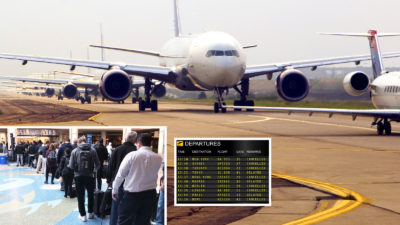Looking beyond rockets and airframes
By Ben Iannotta|May 2019
The Apollo 11 anniversary is bringing out the TV marketers in the U.S., and most of the material is fairly thought-provoking.
In an ad by the wireless company Verizon, the massive Saturn 5 lifts off, and in a grainy film, spectators in Bermuda shorts and oversized sunglasses look skyward in total awe. Cut to a film of people working in front of old-fashioned computer displays. The narrator, identified as a Verizon engineer, says — and I paraphrase — sure, the big rocket was cool, but if you’re an engineer, you should be looking “in awe at those men and women in the room.”
Setting aside the question of whether women, plural, were in the room, my knee-jerk reaction was: Well, the gall of a networking and cable TV company to seize the aerospace industry’s greatest achievement to lure talent away from aerospace.
The commercial stuck with me, so I looked it up on YouTube. I realized I missed the spot’s bigger point, which is a fair one. This mission was humanity’s greatest achievement, not just the aerospace industry’s. In terms of technology, rockets were not the whole story in 1969, and they are not the whole story now. The same goes for aircraft and satellites. These vehicles can’t do much without a network. On the other hand, not much of a network would be needed were it not for the vehicles. Breakthroughs are going to take a big, wide community of talented people, and there will be lots of ways to contribute while making a living.
This message comes through in Aerospace America’s coverage. Our April story, “Waiting in the wings,” about the lack of a firm plan in the U.S. for managing commercial drone traffic, points out that these aircraft probably will need to share information over commercial cellular networks to quickly deconflict their routes.
In the Verizon commercial, with Earth emerging from the curve of the moon, the narrator closes with a pitch for the company’s version of 5G, the standard that’s being rolled out for higher-bandwidth wireless: “When I think of it, I think of what people might do with it. I think of where people might go with it.”
OK, so the ad is not exactly theft. When a rocket lifts off, or a Falcon’s stages land, I will remember the bits, radio waves and those who crafted them.








